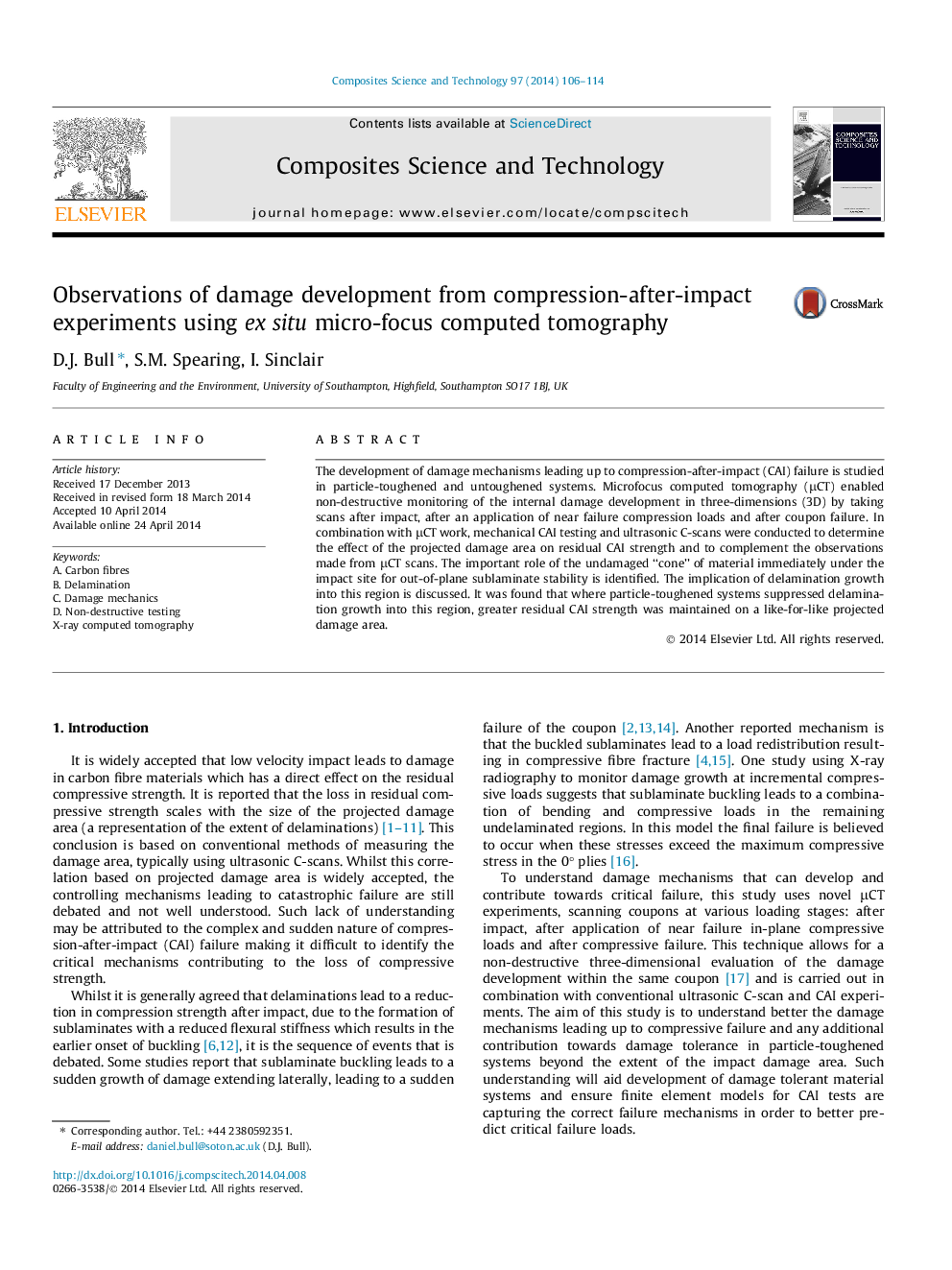| Article ID | Journal | Published Year | Pages | File Type |
|---|---|---|---|---|
| 820310 | Composites Science and Technology | 2014 | 9 Pages |
The development of damage mechanisms leading up to compression-after-impact (CAI) failure is studied in particle-toughened and untoughened systems. Microfocus computed tomography (μCT) enabled non-destructive monitoring of the internal damage development in three-dimensions (3D) by taking scans after impact, after an application of near failure compression loads and after coupon failure. In combination with μCT work, mechanical CAI testing and ultrasonic C-scans were conducted to determine the effect of the projected damage area on residual CAI strength and to complement the observations made from μCT scans. The important role of the undamaged “cone” of material immediately under the impact site for out-of-plane sublaminate stability is identified. The implication of delamination growth into this region is discussed. It was found that where particle-toughened systems suppressed delamination growth into this region, greater residual CAI strength was maintained on a like-for-like projected damage area.
